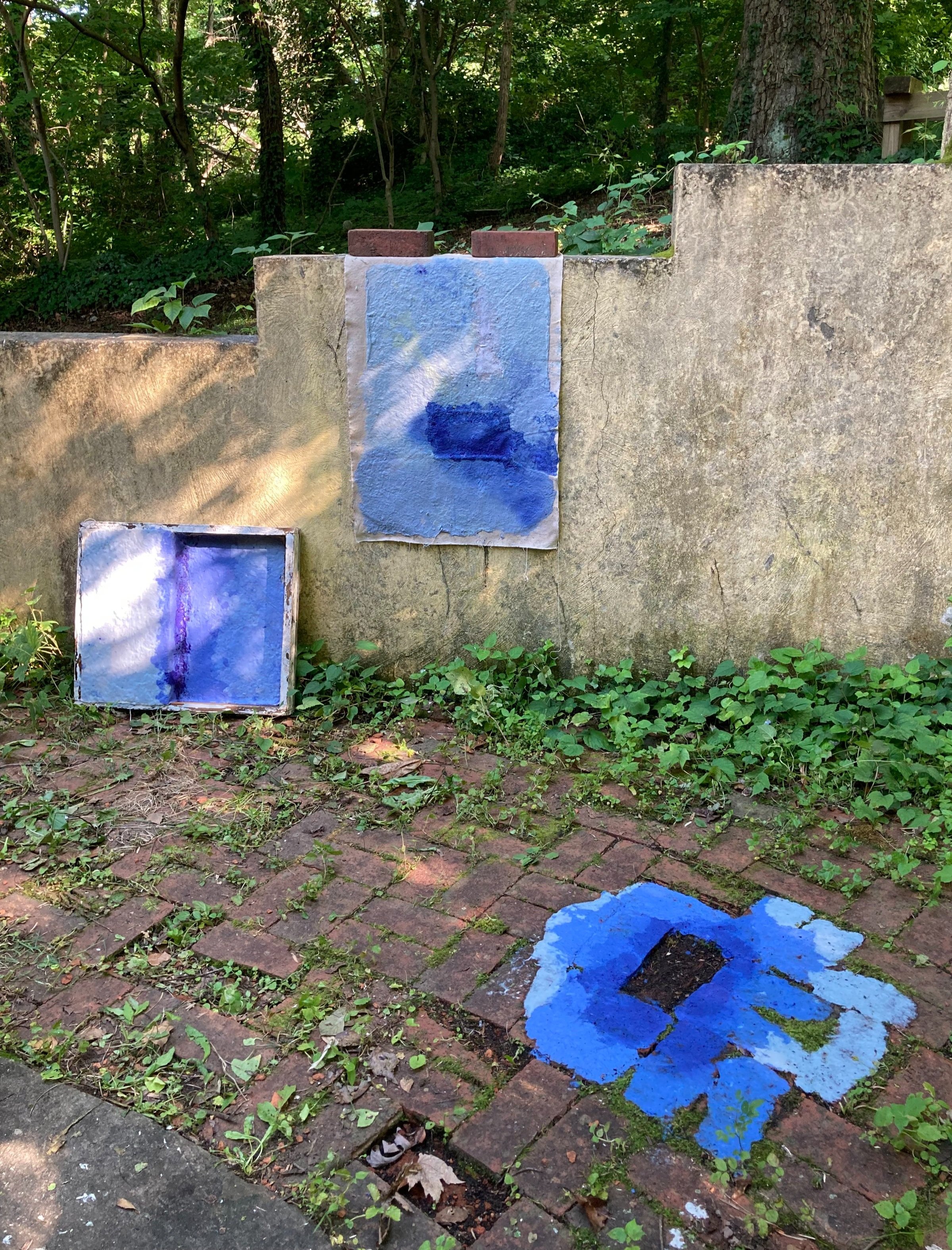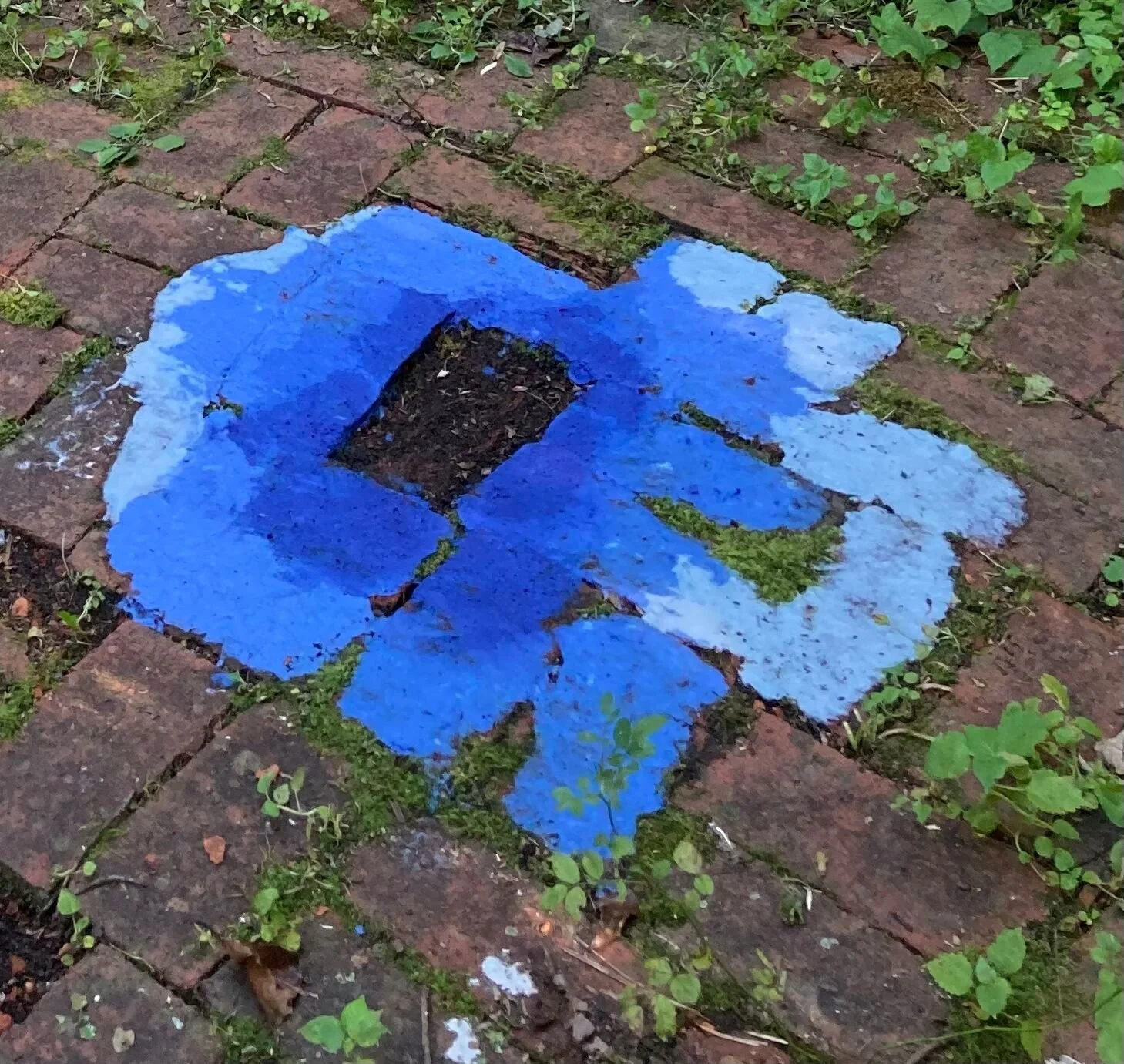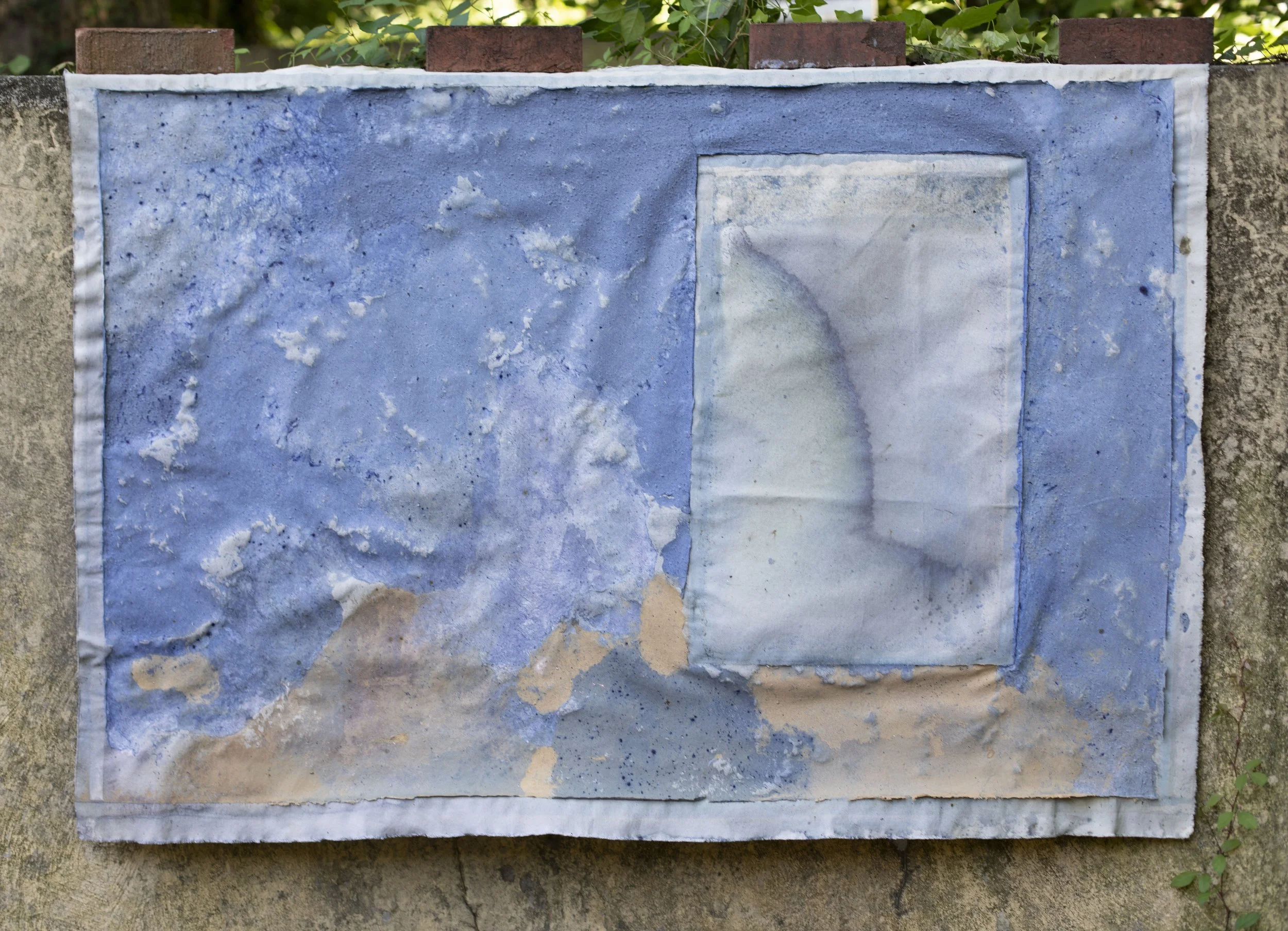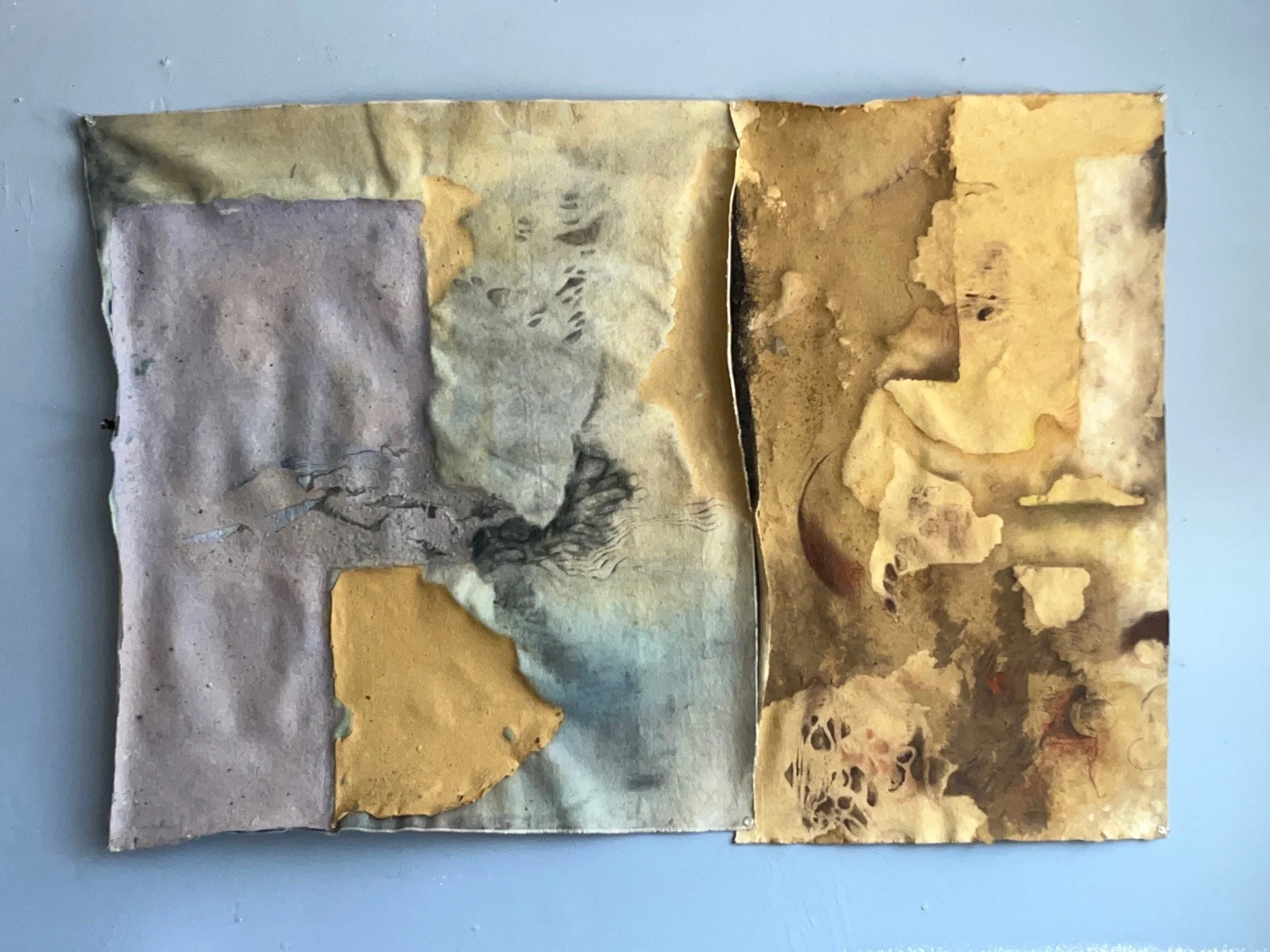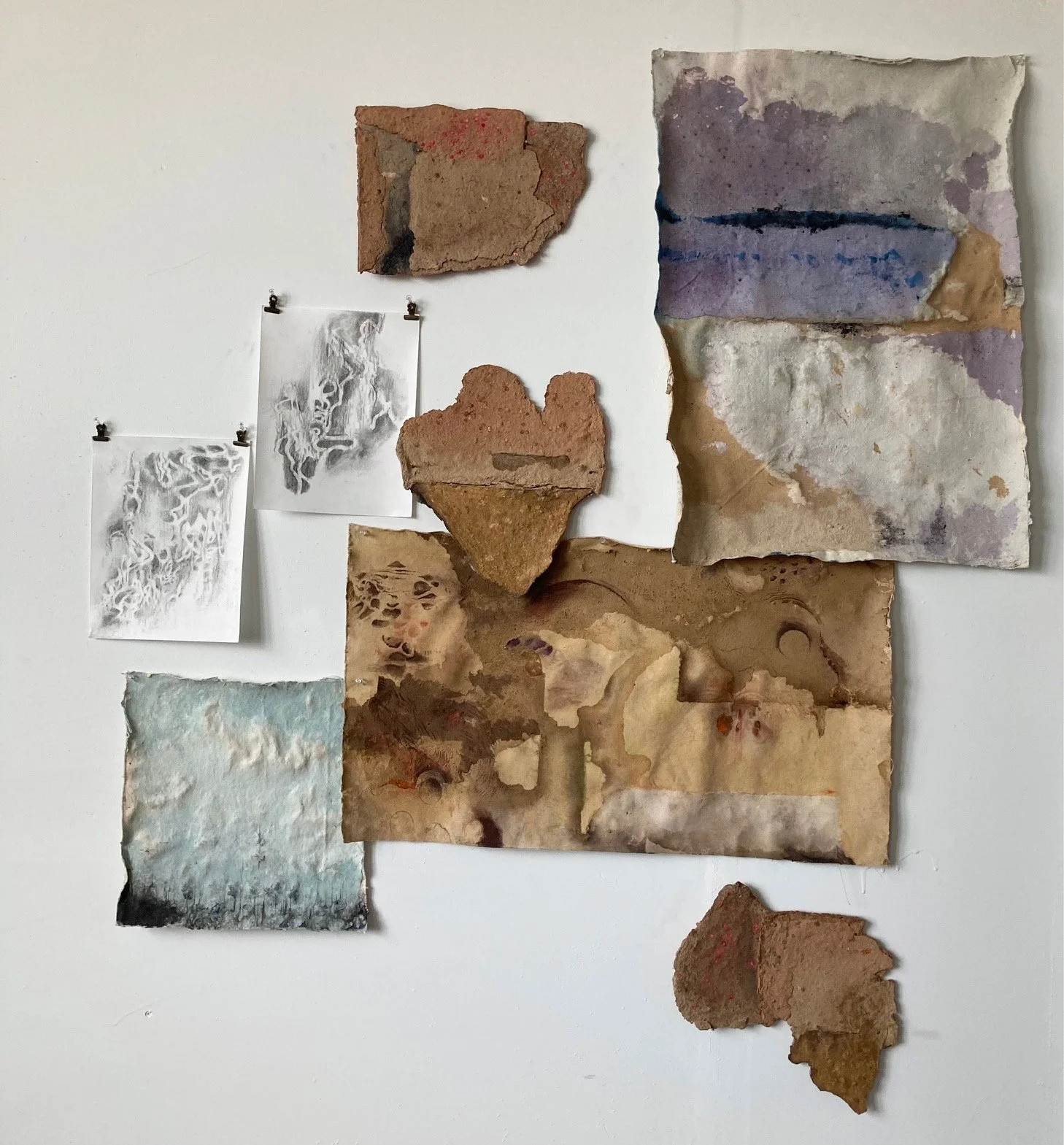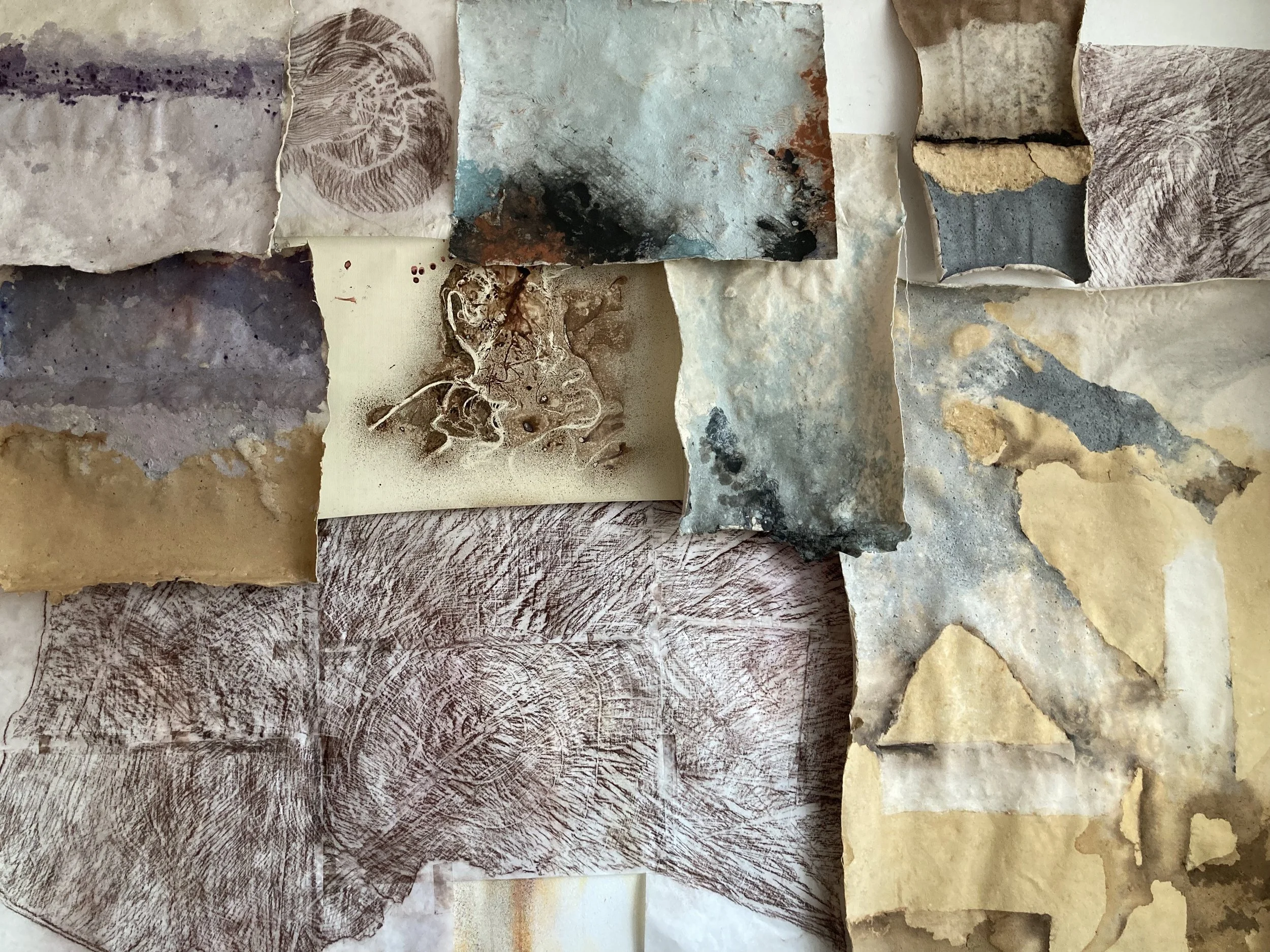exhibited at:
A wooded perch along the Severn River, 200 miles south of my home in Red Hook, Brooklyn where a spike in truck traffic to and from the two new Amazon facilities down the street imperils the air quality in my neighborhood, while record high temperatures and wildfires blaze through city streets, forests, and vast open skies throughout the country and all over the globe.
Sunny’s Bar, Red Hook, Brooklyn, 2023
PeepSpace, Tarrytown, NY (coming Jan/Feb 2025)
project description:
These ephemeral works are animated by the question: is there a way to collaborate with the atmosphere, to let the atmosphere draw its own portrait in this moment?
I set up a series of works involving paper pulp made from a mixture of abaca, a fiber used in hand papermaking from the abaca plant native to the Philippines, and cotton linter, made from cotton seed. I tinted the wet pulp with litmus, a dye made from several species of lichen. Litmus is an Old Norse word meaning from moss. Litmus paper is used as a pH indicator: blue litmus paper turns red under acidic conditions, red litmus paper turns blue under alkaline conditions, and neutral litmus paper is purple. With my bucket full of these botanical bodies from all over the globe, brought together through agriculture, industry, and biopolitical invention, I introduced them to a Maryland backyard of native tulip trees, invasive kudzu, snails, beetles, moths, mosquitos, a derelict honeybee hive (the honeybees themselves a non-native agricultural import ) and the many other occupants of this stretch of earth and sky.
Five lined skinks skittered around the edges of the paper surface I was creating, their blue tails blending with the alkaline terrain. An eastern eyed elater touched down on a paper patch as it turned slowly from purple to blue. Slugs and snails drew silvery lines on the paper when I was off having dinner, while falling walnuts and seeds dropped by the warblers, wrens, chickadees, cardinals and robins stippled the surfaces with a rich diversity of marks and texture.
I moved lichen-slow in the Maryland heat, applying the pulp in mosslike patches to various surfaces in my environment, watching for color changes.
And, it did, but it was a language that was much more subtle that I’d imagined. While the phrase “litmus test” indicates definitive results, working with this lichen dye yielded a beautiful spectrum of indeterminacy. The colors changed continuously. A blender full of deep blue pulp might become bright purple with the addition of rainwater, but then turn blue again the next time the same bucket of water was added to the mix. An area of purple on a concrete retaining wall might go red for a moment, and then dry blue.
I learned that aphid poop, called “honeydew,”accents the neutral purple paper with lovely flecks of red. I waited for more, excited to see if my experiment in colorimetric reagents might reveal to me some new atmospheric language.
The continuous color changes turned the making process into a wild choreography of shifting compositional arrangements. I thought I might keep track of these changes, codifying them into a Werner style color chart like a budding naturalist of the anthropocene. But as the process drew me in, whispering its intimacies, it reminded me that all language is alive, moving and changing, more dance than document.
Installation at Sunny’s Bar, Red Hook, Brooklyn
